Safeguarding Children & Young People in Residential Childcare

This online course covers the safeguarding responsibilities of everyone working in residential childcare. We look at why it’s important to protect children and young people from harm and abuse and the policies and procedures both you and your organisation should follow.
You will learn about different types of abuse; we examine the motivations and behaviours of perpetrators and why early identification is so important. We cover bullying, sexual exploitation and human trafficking including how these can begin, or be facilitated online and the support children and young people will need in order to identify, report and recover from them.
You are important too, so we consider your responsibilities, how to report your concerns and ways you can support children and young people to develop resilience, self-confidence and self-esteem.
This course is part of our unlimited Course and Certificate package
Pricing for Social Care Training starts from £3 per person per month inclusive more info>>
Who should take this online course?
This online course has been designed specifically for people working with children and young people in a residential social care setting. It may also be useful to a wider audience of people who would like to know more about safeguarding children. This online course provides content to meet qualification units relating to residential childcare.
We offer our courses for your LMS as SCORM files. Depending on the scope of what you need there may be a charge for this. Please connect to discuss it with us.
Course Content
- UNDERSTAND THE CONTEXT OF SAFEGUARDING AND PROTECTION OF CHILDREN AND YOUNG PEOPLE
1.1 Define the term safeguarding in relation to children and young people
1.2 Explain how child protection relates to safeguarding
1.3 Outline current legislation, national guidelines and policies affecting the safeguarding and protection of children and young people
- UNDERSTAND THE CONTEXT OF SAFEGUARDING AND PROTECTION OF CHILDREN AND YOUNG PEOPLE
2.1 Explain why it is important to ensure children and young people are protected from harm and abuse
2.2 Explain how findings from official inquiries and serious case reviews are used to inform practice
2.3 Identify policies and procedures that are in place to protect children and young people and the adults who work with them
2.4 Analyse how working practices with children and young people reflect national and local guidelines, policies and procedures for safeguarding
2.5 Explain how following procedures helps protect team members from allegations and complaints as well as protecting children and young people from harm and abuse
2.6 Explain the importance of building positive, trusting and consistent relationships with children and young people who are vulnerable to harm or abuse
2.7 Describe systems and practices to ensure children and young people can voice allegations, concerns and complaints and be confident these will be addressed
- UNDERSTAND THE NATURE OF ABUSE THAT CAN AFFECT CYP IN RESIDENTIAL CARE
3.1 Describe types of abuse that a child or young person may experience
3.2 Describe signs and indicators associated with each type of abuse
3.3 Describe factors which increase the vulnerability of children and young people in residential childcare
3.4 Summarise common myths about people who harm and abuse children and young people
3.5 Describe know characteristics of perpetrators and their behaviours that can make it difficult for children and young people to report harm or abuse and for others to recognise and address abusive activity
- UNDERSTAND HOW TO ADDRESS CONCERNS ABOUT ABUSE
4.1 Outline the actions to be taken in line with policies and procedures if abuse is suspected
4.2 Explain the importance of early identification of abuse
4.3 Explain why warning signs may be mis-interpreted or ignored
4.4 Explain reasons why a child or young person may not recognise that they are being abused or exploited
4.5 Explain reasons why a child or young person may not disclose that they are being abused or exploited
- UNDERSTAND POLICIES, PROCEDURES AND PRACTICES TO ADDRESS BULLYING
5.1 Explain the effects of different types of bullying on children and young people
5.2 Outline the policies and procedures that should be followed in response to concerns or evidence of bullying
5.3 Explain why policies and procedures regarding bullying are necessary
5.4 Explain how to support a child or young person when bullying is suspected or alleged
- UNDERSTAND PRINCIPLES FOR E-SAFETY
6.1 Explain the risks and possible consequences for children and young people from
6.2 Describe ways of reducing risk to children and young people from: a) social networking b) internet use c) buying and selling online d) electronic communication devices
- UNDERSTAND HOW TO MINIMISE RISK OF HARM TO A CHILD OR YOUNG PERSON WHO GOES MISSING FROM CARE
7.1 Describe the risks to a child or young person who goes missing from care
7.2 Outline actions to be taken in line with policies and procedures when a child or young person goes missing
7.3 Explain the importance of prompt and persistent action when a child or young person goes missing
- UNDERSTAND CHILD SEXUAL EXPLOITATION
8.1 Define child sexual exploitation and its relationship to human trafficking
8.2 Describe how child sexual exploitation differs from nonabusive sexual activity
8.3 Outline different patterns of child sexual exploitation in relation to a) Gangs b) Groups c) Solo perpetrators
8.4 Describe typical behaviour patterns of those who sexually exploit children and young people
8.5 Describe the support that should be offered to a child or young person who has been the victim of child exploitation
8.6 Explain the role of key partners in protecting children and young people from sexual exploitation
- UNDERSTAND THE CONCEPT OF MULTI- AGENCY WORKING TO SAFEGUARD CHILDREN AND YOUNG PEOPLE
9.1 Explain what is meant by multi-agency working in the context of safeguarding
9.2 Identify multi agency forums which coordinate the safeguarding of children and young people locally
9.3 Describe the roles and responsibilities of the different organisations that may be involved in situations where a) harm or abuse is suspected or disclosed b) a child or young person has been abused or harmed c) a child or young person has gone missing from care
- UNDERSTAND HOW TO EMPOWER CYP TO DEVELOP STRATEGIES TO PROTECT THEIR OWN SAFETY AND WELLBEING
10.1 Explain the importance of building children and young people’s resilience, self-confidence and self-esteem
10.2 Describe ways to work with children and young people to enable them to develop protective strategies
10.3 Describe ways of empowering children and young people to make informed choices that support their safety
- UNDERSTAND PROCESS AND PROCEDURES WHERE THERE ARE CONCERNS ABOUT PRACTICE
11.1 Explain how to report concerns about practice in the work setting
11.2 Describe ways in which whistle blowers are protected in the work setting
11.3 Explain why those whose practice is being questioned are also protected and how this is achieved
11.4 Explain the process of escalating concerns about practice if they are not being addressed
Aims of the course
By the end of the training course, you will:
- Understand the safeguarding responsibilities of everyone working in residential childcare
- Identify different types of abuse
- Know what to do a child makes a disclosure or you witness abuse
- Understand the motivations and behaviours of perpetrators
- Know how to report concerns
- Understand how to support children and young people to develop resilience
Course Screenshots
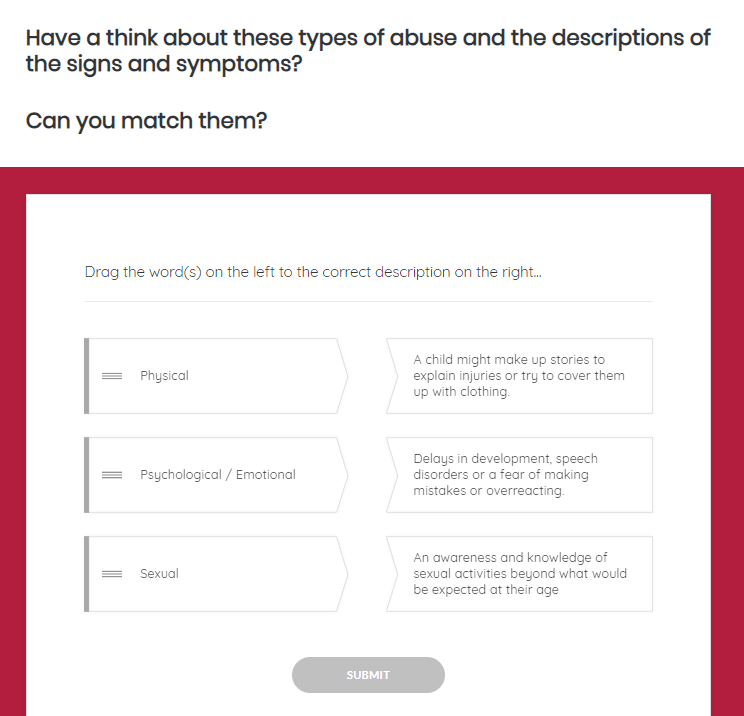
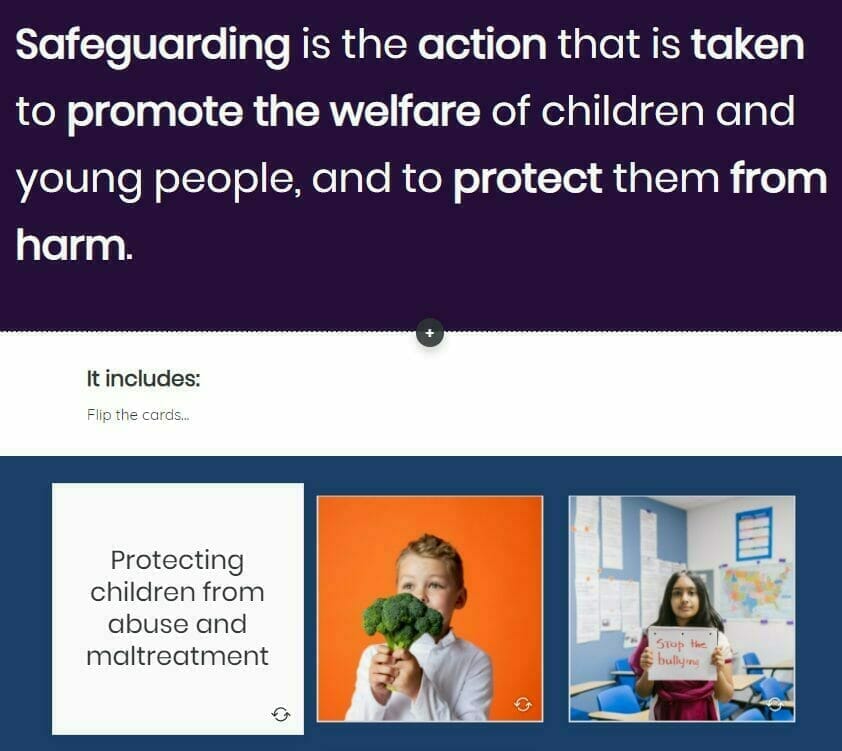

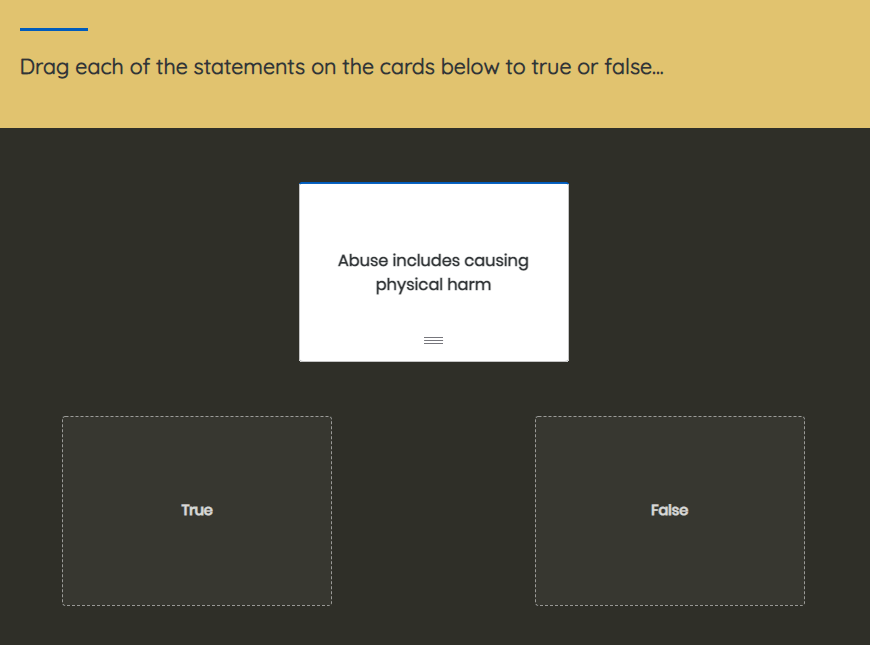
Social Care Unlimited Course and Certificate Package
Price options are per user per month, inclusive
- Most FlexibleMonthly Plan 6 excluding VATUnlimited Access to ALL coursesNo set-up fees or hidden chargesTraining MatrixPrice per person, per month1 month notice period
- Better than Half PriceAnnual Plan 3 p/month (exc. VAT)Unlimited Access to ALL coursesNo set-up fees or hidden chargesTraining MatrixPrice per person, per yearBilled Annually
- For organisationsMultiple Plan POA For multiple staff, contact us for a demo, bespoke pricing and a dedicated account managerUnlimited Access to ALL coursesNo set-up fees or hidden chargesTraining MatrixPOANotice Period: By arrangement
Recycle Licences
Our plans allow organisations to recycle licences instead of always purchasing more credits - no hidden charges for changes in staff! If you would like to purchase more than 50 licences, book a demo and know more please contact us.
If you sign in to your account on Click before you take this training course, you will be able to change the accessibility settings to suit your needs. This includes translation into 100+ languages, some of which can also be read out loud to you.
PPE (COVID-19) Essentials
PPE (COVID-19) Essentials Online Training Course PPE is used in all areas of industry to protect employees from hazards. In health and…
Stress and Resilience Course
Who should take this course? This course has been designed specifically for Care and Support Workers working in a social care setting….
Why use Grey Matter Learning?
- Our methodology values previous learning, saving time
- Clever accessibility settings including 100+ languages
- 100+ high quality courses, specially written for care
- Join thousands of services and local authorities
- Proven to reduce staff turnover and improve CQC ratings
- Established 15 years - we know what works
- Skills for Care Centre of Excellence, CPD certification
- No hidden charges, we recycle your licences


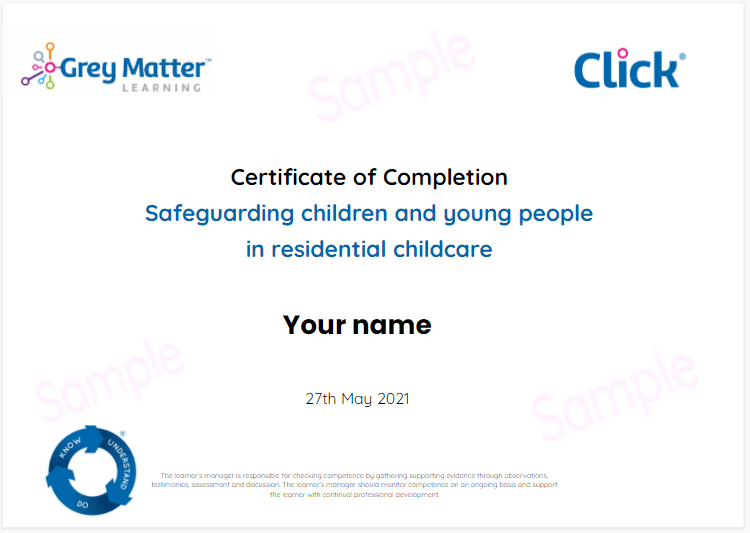
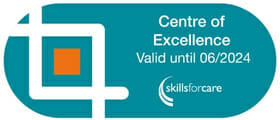




Social Care Hubs